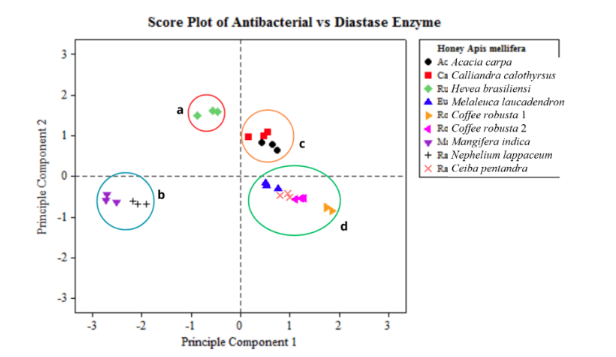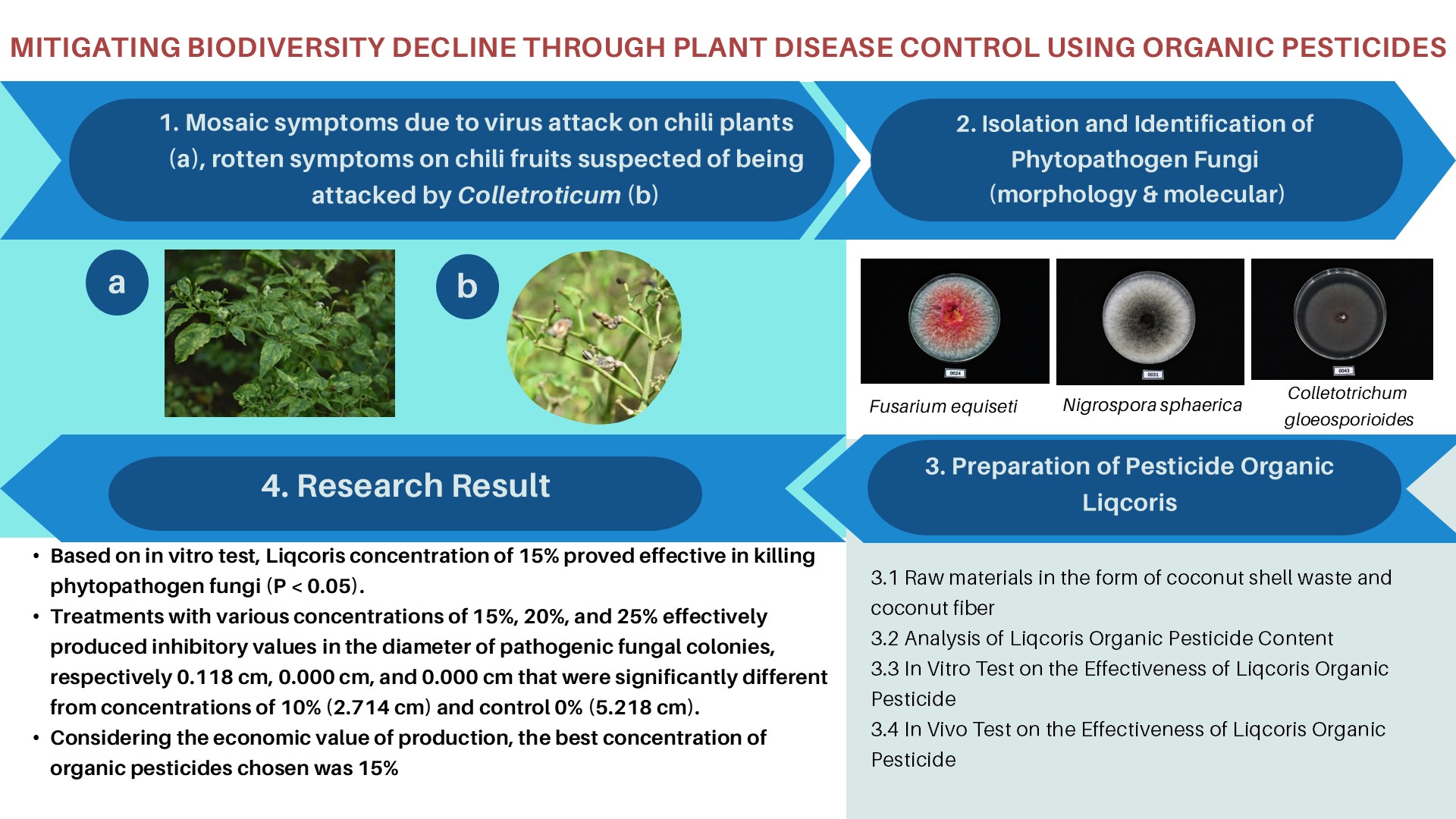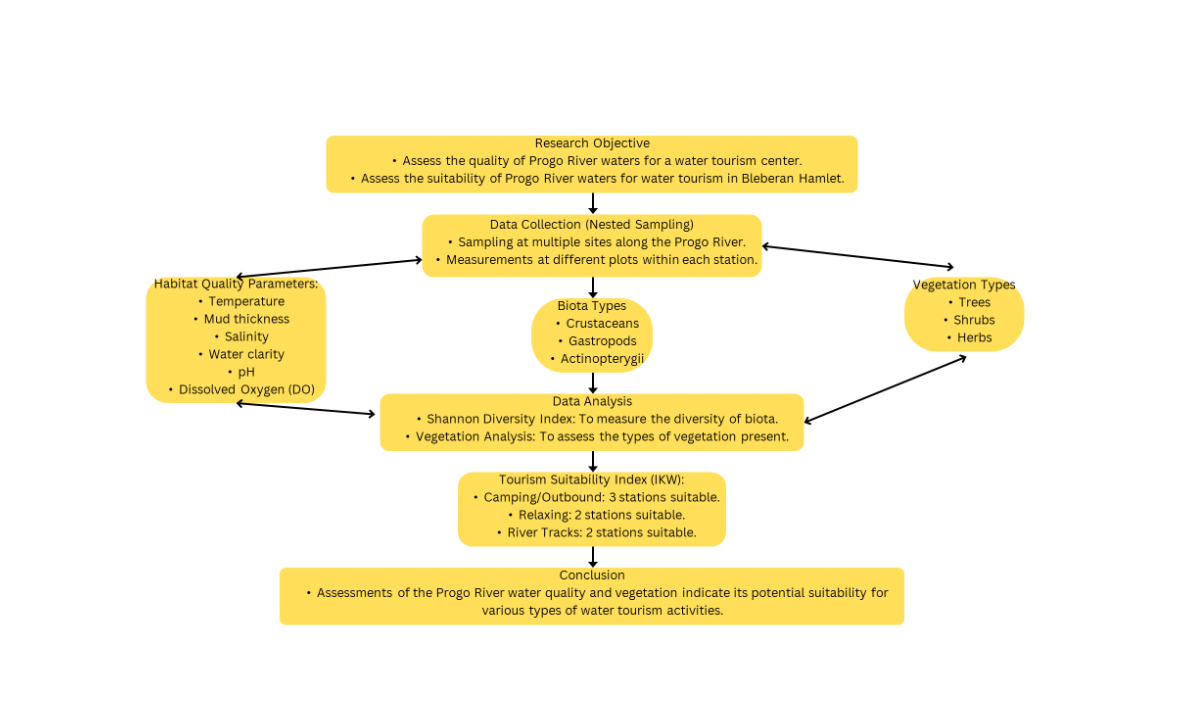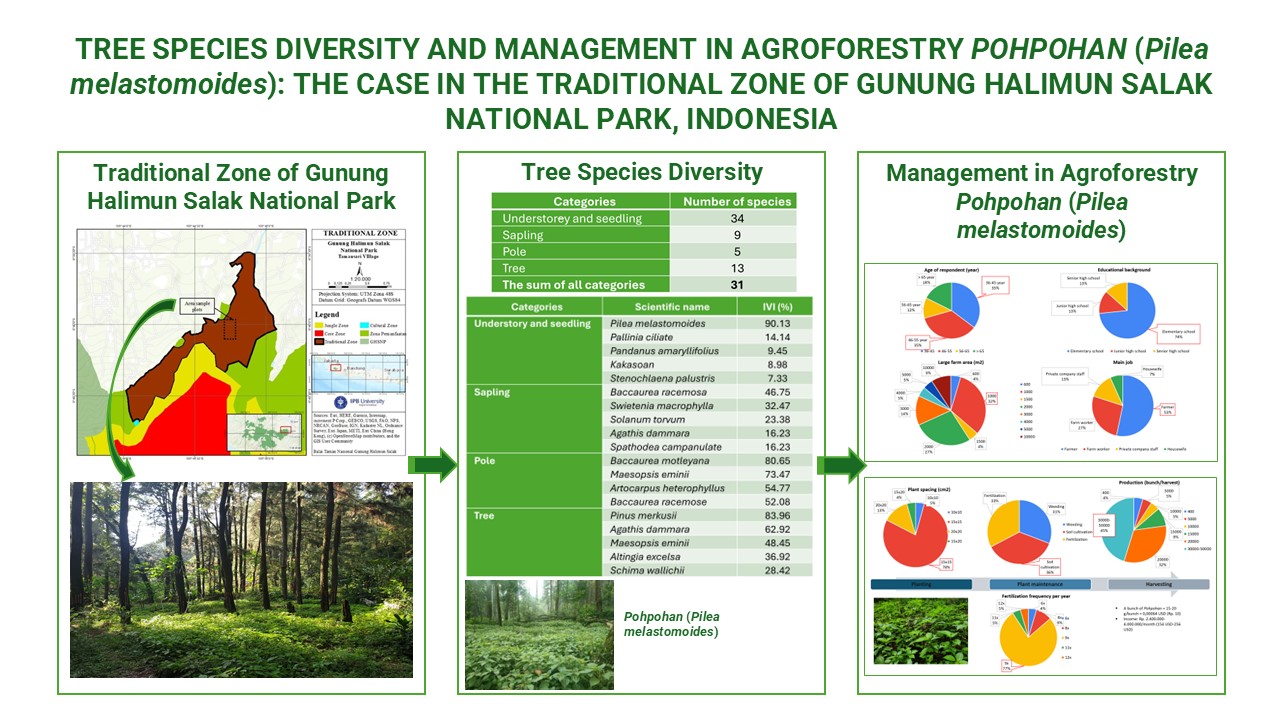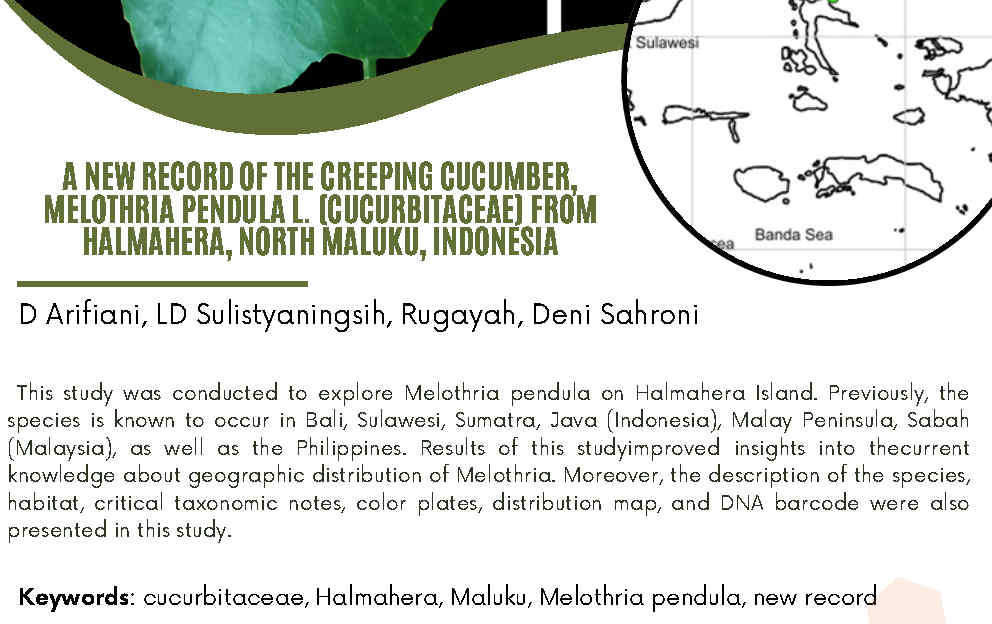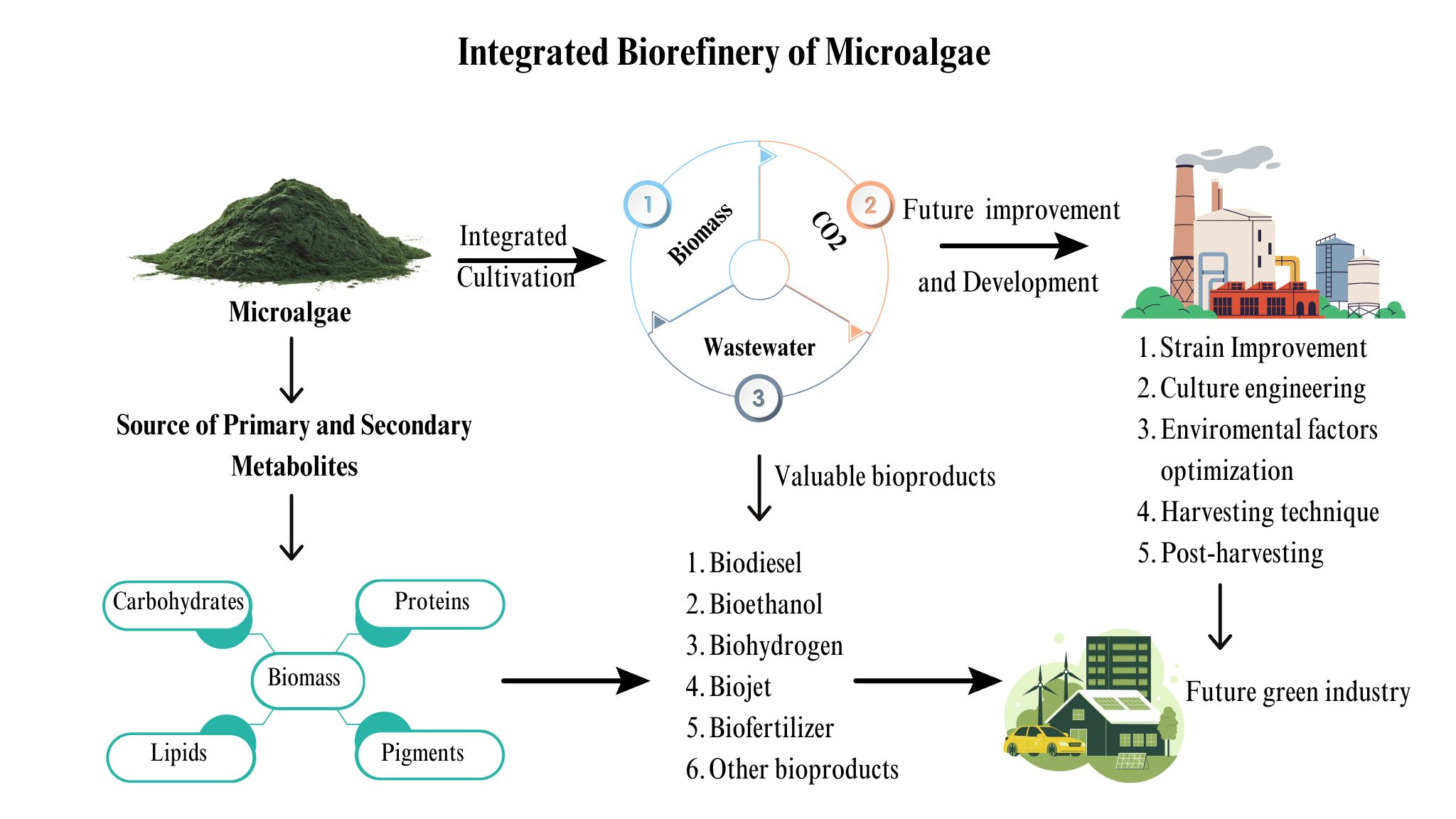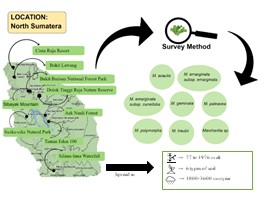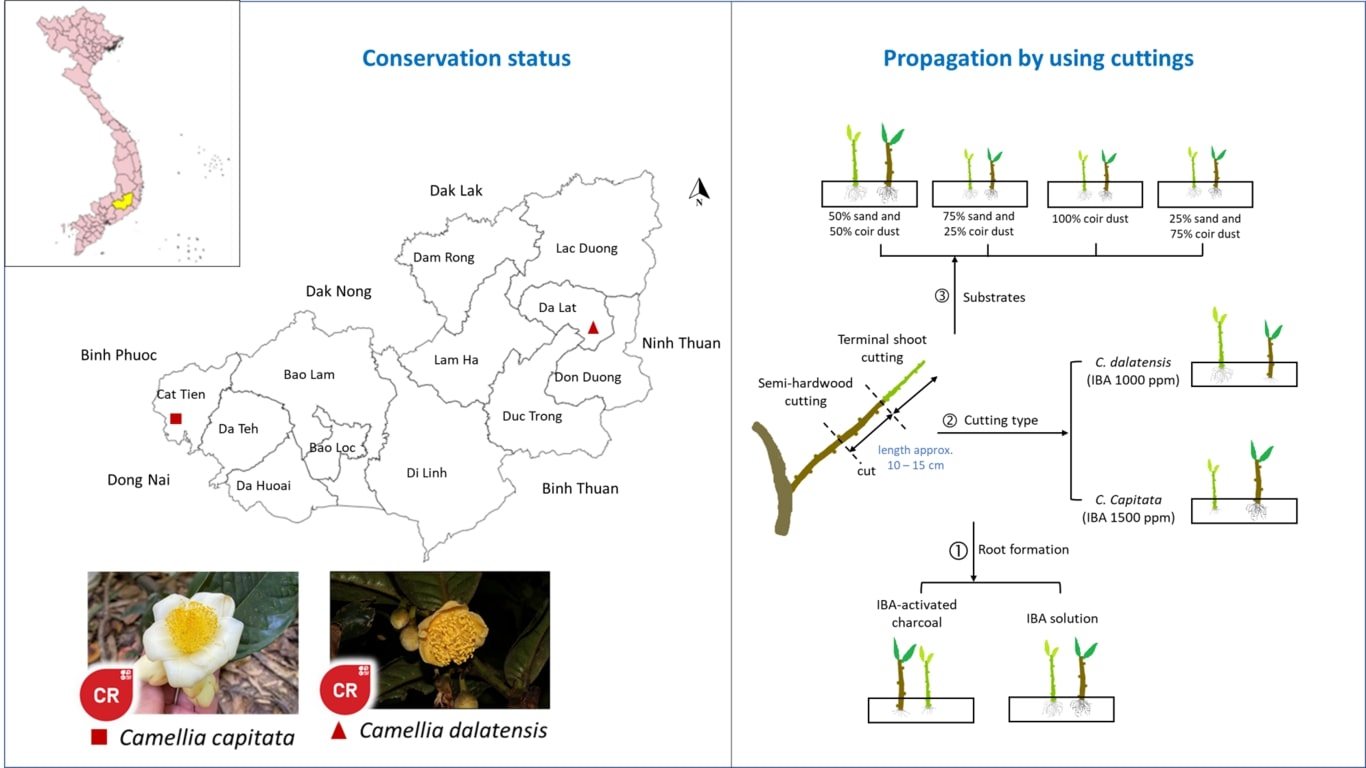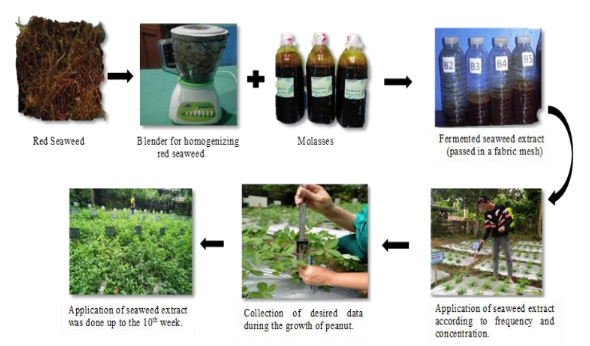METABOLITE PROFILING OF MORINGA USING PY-GCMS AND TOLERANCE EVALUATION TO ALUMINUM ON IN VITRO CULTURE

Article Highlight:
- Four accessions of Moringa oleifera from different regions in Indonesia were evaluated to identify with tolerance to aluminium (Al) stress
- Eight metabolites show a very high correlation with acetic acid (one of the metabolites associated with AlCl3 stress) including cyclopentene, 2-allyphenol, 4-ethynyl-6-8-dioxane, vinyl ether, ethanone 1-oxiranyl, 2-methylpyridine, 2-butanone, and ethanesulfonic acid.
- This research makes a significant contribution to understanding aluminium tolerance in oleifera by identifying tolerant accessions, clustering relevant traits, and highlighting key metabolites to in vitro culture.
ABSTRACT
Moringa oleifera Linn. has received substantial scientific interest due to its numerous bioactive compounds and its function as a nutritional resource. The absorption of aluminum by plants hinders several metabolic and physiological processes, leading to inhibited plant development and decreased agricultural output. Some accessions from different regions in Indonesia were evaluated to identify those with tolerance to aluminum (Al) stress. Al-tolerant selection was carried out in vitro through the selection method for Al stress by adding 0, 50, 100, 250, and 500 mg/L of AlCl3 to the media. Furthermore, identifying the metabolite profile of four M. oleifera accessions from four distinct regions in Indonesia: Blora, Bogor, Enrekang, and Bima, has been done using Py-GCMS. Specific metabolites associated with tolerance to Al stress and organic acids need to be identified. The highest survival rate was observed in the Bogor and Blora accessions when exposed to AlCl₃ at concentrations ranging from 0 to 250 mg/L, demonstrating greater tolerance to AlCl₃ than other accessions based on various variable, such as shoot height, number of shoots, number of petioles on a medium containing 100 to 250 mg/L of AlCl₃. The mean value was not statistically different from the control. Acetic acid was identified as one of the metabolites associated with AlCl₃ stress. A total of 21 metabolites were specifically correlated with acetic acid in a positive manner, among which 8 metabolites including cyclopentene, 2-allyphenol, 4-ethynyl-6-8-dioxane, vinyl ether, ethanone 1-oxiranyl, 2-methylpyridine, 2-butanone, and ethanesulfonic acid exhibited a very high correlation.
Downloads
INTRODUCTION
Aside from its role as a nutritional resource, Moringa oleifera Linn. has received significant scientific interest for having numerous bioactive compound. These substances, contained in seeds, pods, and leaves, exert significant physiological effects on humans. Moringa exemplifies a food source that is rich in essential elements, such as minerals, vitamins, and proteins, making it a reliable and long-lasting source of nourishment(Yuniati et al., 2022).
According to(Srivastava et al., 2023), the environmentally conscious cultivation of Moringa is in line with the ideas of sustainable farming, which makes it a sustainable choice. Humans consume the entire M. oleifera plant, including its leaves, fruits, immature pods, and flowers, as traditional food. Various countries, including India, Hawaii, the Philippines, and other African countries, utilize the flowers, fruits, foliage, and early seed pods of this tree as exceptionally nutritious vegetables(, 2021).
Moringa tree produces between 43 and 115 tonnes of biomass per hectare annually. Its leaves contain high levels of dry matter, crude protein, essential amino acids, and phytoactive substances, such as phenolic acids and flavonoids. According to(Kholif et al., 2016)and(Nouman et al., 2016), they also contain high levels of vitamins A, B, C, and E(Zheng et al., 2022).
Conventional propagation techniques for M. oleifera predominantly involve the cultivation through seedlings or vegetative cuttings.(Debnath & Juran, 2020)have identified several obstacles associated with conventional propagation methods, including a limited quantity of explants, lethargic growth, and heightened vulnerability to pests and diseases. Using in vitro micropropagation, a widely applied technique that has significantly improved the quality of several plant propagations, would be an alternative method(Zheng et al., 2022).
The reduction of arable land from industrialization and conversion has posed a significant obstacle to propagating M. oleifera. To address this challenge, using suboptimal land becomes an alternative option. According to(Fanindi et al., 2020), Indonesia has approximately 108.8 million ha of suboptimal land area as acid dry land, with 62.6 million ha still having the potential for agricultural use. However, inefficient land use is constrained by several abiotic issues, such as low pH soil and high aluminum (Al) saturation. These characteristics inhibit the photosynthetic process and plant growth, resulting in reduced agricultural yields(, 2018);(Fanindi et al., 2020).
Acid-dry land is defined as soil with a pH below 5, indicating acidity. The majority of agricultural land in Indonesia has acidic soil conditions. High rainfall is one contributing factor. Increased rainfall can accelerate the degradation of soil minerals. In moist tropical regions, intensive weathering and nutrient leaching processes cause the soil to be acidic and have high aluminum saturation. Soil acidity can result from prolonged land use and excessive application of chemical fertilizers(Mulyani & Sarwani, 2013).
Acid soils make up approximately 40% of the world’s potentially cultivable areas. Aluminum ranks as the third most plentiful element, behind oxygen and silicon, according to(Riaza et al., 2018). Plants absorption of aluminum hinders several metabolic and physiological processes, resulting in inhibited plant development and decreased agricultural output(Liu et al., 2023).
Soil pH significantly influences plant metabolism, affecting nutrient availability, enzyme activity, and overall biochemical pathways. In acidic soil conditions, essential nutrients, such as phosphorus, calcium, and magnesium become less available, potentially altering the secondary metabolite profile of plants(Sanchez et al., 2006). To comprehensively understand these chemical alterations, a precise and sensitive analytical technique is required.
Pyrolysis gas chromatography and mass spectroscopy (Py-GCMS) is a direct method that analyzes the pyrolytic behavior of biomasses and characterizes their volatile products. Recently, there has been a significant increase in interest in this technique due to its ability to identify all pyrolytic products more efficiently than the GCMS of condensable products (liquid fraction). Identification of these products under various operating conditions necessitates complete condensation(Bensidhom et al., 2021).
According to Inostroza-Blancheteau et al. (2012), organic acids are very important for both tolerance and avoidance pathways because they make stable complexes with Al3+ inside and outside of cells that neutralize it. Various crops excrete distinct varieties of organic acids. For instance, studies have shown that the roots of wheat(Yang et al., 2011)and eucalyptus(Li et al., 2021)secrete large levels of malic acid and acetic acid. Furthermore, researchers have identified citric acid secretion in maize, common bean, and cassia. Additionally, oxalic acid secretion has been discovered in buckwheat(Liu et al., 2023).
The objective of this research was to characterize the metabolite profiles of four M. oleifera accessions obtained from four distinct regions in Indonesia, i.e., Blora, Bogor, Enrekang, and Bima, utilizing Py-GCMS. The research further aimed to assess the responses of these accessions to aluminum chloride (AlCl₃) stress to in vitro culture. Additionally, to identify specific metabolite molecules, excluding organic acids, that are linked to tolerance to Al stress.
MATERIALS AND METHODS
Materials and Experimental Design
The materials used were shoot cultures of 4 accessions of M. oleifera at 6 weeks after culture (WAC). The basal medium used was DKW medium (Driver & Kuniyuki 1984), supplemented with AlCl3according to the treatment tested. The experimental design was a completely randomized factorial design, with two factors tested: 1) The type of M. oleifera accessions: Blora (Java Island), Bogor (Java Island), Bima (Lombok Island), and Enrekang (Sulawesi Island); 2. Concentrations of AlCl3(0, 50, 100, 250, and 500 mg/L). This experiment used 12
Bensidhom G, Arabiourrutia M, Trabelsi ABH, Cortazar M, Ceylan S, Olazar M. 2021. Fast pyrolysis of date palm biomass using Py-GCMS. J Energy Inst 99:229-39. DOI: 10.1016/j.joei.2021.09.012 DOI: https://doi.org/10.1016/j.joei.2021.09.012
Blancheteau I, Rengel CZ, Alberdi M. 2012. Molecular and physiological strategies to increase aluminum resistance in plants. Mol Biol Rep 39 (3):2069-79. DOI: https://doi.org/10.1007/s11033-011-0954-4
Debnath C, Juran CG. 2020. In vitro propagation and variation of antioxidant properties in micropropagated vaccinium berry plants: A review. Molecules 25(4):788-803. DOI: 10.3390/molecules25040788 DOI: https://doi.org/10.3390/molecules25040788
Dolui D, Hasanuzzaman M, Fujita M, Adak MK. 2023. 2,4-D mediated moderation of aluminum tolerance in Salvinia molesta D. Mitch. with regards to bioexclusion and related physiological and metabolic changes. Int J Phytoremed 26:27-44. DOI: 10.1080/15226514.2023.2216311 DOI: https://doi.org/10.1080/15226514.2023.2216311
Emi E, Wahyudi BS, Eni B, Wawan K. 2014. Pengaruh suhu dan perbandingan katalis zeolit terhadap karakteristik produk pirolisis kayu jati (Tectona grandis L.f.) [The effect of temperature and zeolite catalyst comparison on the characteristics of teak wood (Tectona grandist Lf) pyrolysis products]. Prosiding Seminar Nasional Aplikasi Sains dan Teknologi 2014. Yogyakarta (ID): Institut Sains & Teknologi Akprind.
Fanindi A, Sajimin, Sutedi E. 2020. Morphological characteristics and productivity of bengal grass (Panicum maximum) cultivars on dry acid soil. JAI 48(2):196-202. DOI: 10.24831/ jai.v48i2.30879 DOI: https://doi.org/10.24831/jai.v48i2.30879
Fendi, Kurniaty D. 2016. Identification content extract of teak wood using Py-GCMS. JIPI 21(3):167-71. DOI: 10.18343/jipi.21.3.167 DOI: https://doi.org/10.18343/jipi.21.3.167
Kalra C, Babbar SB. 2010. Nitric oxide promotes in vitro organogenesis in Linum usitatissimum L. PCTOC 03:353-9. DOI: 10.1007/s11240-010-9788-3 DOI: https://doi.org/10.1007/s11240-010-9788-3
Kholif AE, Morsy TA, Gouda GA, Anele UY, Galyean ML. 2016. Effect of feeding diets with processed Moringa oleifera meal as protein source in lactating Anglo-Nubian goats. Anim Feed Sci Technol 217:45-55. DOI: https://doi.org/10.1016/j.anifeedsci.2016.04.012
Klau ME, Rohaeti E, Rafi M, Artika IM, Ambarsari L, Nurcholis W. 2022. Metabolite profiling of Curcuma zanthorrhiza varieties grown in different regions using UHPLC-Q-OrbitrapHRMS and chemometrics analysis. Biointerface Res Appl Chem 13(1):1-26. DOI: 10.33263/BRIAC131.026 DOI: https://doi.org/10.33263/BRIAC131.026
Li Y, Yan L, Zhang B, Yang S, Zhao Z. 2021. A study on sugar and organic acid components in different apple cultivars. Int J Fruit Sci 38:11-24.
Liu J, Khan S, Hu Y, Yin L, Huang J. 2023. Physiological mechanisms of exogenous organic acids to alleviate aluminum toxicity in seedlings of mungbean, buckwheat, and rice. IJPPB 203:108-31. DOI: 10.1016/j.plaphy.2023.108031 DOI: https://doi.org/10.1016/j.plaphy.2023.108031
Martin AF, Hapsari, BW, Rudiyanto R, Ermayanti TM. 2018. Growth and proline accumulation in response to osmotic stress induced by polyethylene glycol treatment in Tacca leontopetaloides cultured in vitro. IJAT 4(5):705-16.
Matsuse K, Abdelrahman M, Ariyanti NA, Tsuji F, Hirata S, Nakajima T, …, Shigyo M. 2022. Targeted metabolome profiling of indonesian shallots and japanese long-day/short-day bulb onions. Metabolites 12:12-34. DOI: 10.3390/metabo12121260 DOI: https://doi.org/10.3390/metabo12121260
Mulyani A, Sarwani M. 2013. The characteristic and potential of sub optimal land for agricultural development in Indonesia. JSL 7(1):47-55.
Nouman WF, Anwar T, Gull A, Newton E, Rosa R, Dominguez-Perles. 2016. Profiling of polyphenolics, nutrients and antioxidant potential of germplasm's leaves from seven cultivars of Moringa oleifera Lam. Ind Crop Prod 83:166-76. DOI: https://doi.org/10.1016/j.indcrop.2015.12.032
Pang Z, Lu Y, Zhou G, Hui F, Xu L, Viau C, …, Xia J. 2024. MetaboAnalyst 6.0: Towards a unified platform for metabolomics data processing, analysis and interpretation. Nucleic Acids Res 52(W1):W398-W406. DOI: 10.1093/nar/gkae253 DOI: https://doi.org/10.1093/nar/gkae253
Peixoto PHP, Da Matta FM, Cambraia J. 2002. Responses of the photosynthetic apparatus to aluminum stress in two sorghum cultivars. J Plant Nutr 25:821-32. DOI: https://doi.org/10.1081/PLN-120002962
Riaza ML, Yan X, Wu S, Hussain O, Aziz C, Jiang. 2018. Mechanisms of organic acids and boron induced tolerance of aluminum toxicity: A review. Ecotox Environ Safe 165:25-35. DOI: 10.1016/j.ecoenv.2018.08.087 DOI: https://doi.org/10.1016/j.ecoenv.2018.08.087
Sanchez NR, Salazar JM, Peters M. 2006. Biomass production and chemical composition of Moringa oleifera under different planting densities and levels of nitrogen fertilization. Agrofor Syst 66(3):231-42. DOI: 10.1007/s10457-005-8847
Srivastava SVK, Pandey KK, Dash D, Dayal P, Wal B, Debnath R, Singh AHD. 2023. Dynamic bioactive properties of nutritional superfood Moringa Oleifera: A comprehensive review. J Agric Res 23:36-78. DOI: 10.1016/j.jafr.2023.100860. DOI: https://doi.org/10.1016/j.jafr.2023.100860
Sun G, Zhu H, Wen S, Liu L, Gou L, Guo Z. 2020. Citrate synthesis and exudation confer Al resistance in alfalfa (Medicago sativa L.). Plant Soil 449:319-29. DOI: 10.1007/s11104-020-04490-8 DOI: https://doi.org/10.1007/s11104-020-04490-8
Vega A, Delgado N, Handford M. 2022. Increasing heavy metal tolerance by the exogenous application of organic acids. Int J Mol Sci 23:5438. DOI: 10.3390/ijms23 105438 DOI: https://doi.org/10.3390/ijms23105438
Xu LM, Liu C, Cui BM, Wang N, Zhao Z, Zhou LN, …, Zhang SZ. 2018. Transcriptomic responses to aluminum (Al) stress in maize. J Integr Agric 17:1946-58. DOI: https://doi.org/10.1016/S2095-3119(17)61832-X
Yamaguchi NU, Cusioli LF, Quesada HB, Camargo MEF, Fagundes-Klen MR, Salcedo AMV, …, Bergamasco R. 2021. A review of Moringa oleifera seeds in water treatment: Trends and future challenges. Process Saf Environ Protect 147:405-20. DOI: 10.1016/j.psep.2020.09.044 DOI: https://doi.org/10.1016/j.psep.2020.09.044
Yang Y, Wang QL, Geng MJ, Guo ZH, Zhao Z. 2011. Effect of indole-3-acetic acid on aluminum-induced efflux of malic acid from wheat (Triticum aestivum L.). Plant Soil 346(2):215-30. DOI: https://doi.org/10.1007/s11104-011-0811-1
Yuniati N, Kusumiyati K, Mubarok S, Nurhadi B. 2022. The role of moringa leaf extract as a plant biostimulant in improving the quality of agricultural products. Plants 11(17):2186. DOI: 10.3390/plants11172186 DOI: https://doi.org/10.3390/plants11172186
Zheng M, Yang H, Yang E, Zou X, Chen X, Zhang J. 2022. Efficient in vitro shoot bud proliferation from cotyledonary nodes and apical buds of Moringa oleifera Lam. Ind Crops Prod 187:115394. DOI: 10.1016/j.indcrop.2022.115394 DOI: https://doi.org/10.1016/j.indcrop.2022.115394
Copyright (c) 2025 Rudiyanto, Agus Purwito, Darda Efendi, Andri Fadillah Martin

This work is licensed under a Creative Commons Attribution-NonCommercial-NoDerivatives 4.0 International License.
Authors who publish with this journal agree with the following terms:
- Authors retain copyright and grant the journal right of first publication, with the work 1 year after publication simultaneously licensed under a Creative Commons attribution-noncommerical-noderivates 4.0 International License that allows others to share, copy and redistribute the work in any medium or format, but only where the use is for non-commercial purposes and an acknowledgement of the work's authorship and initial publication in this journal is mentioned.
- Authors are able to enter into separate, additional contractual arrangements for the non-exclusive distribution of the journal's published version of the work (e.g., post it to an institutional repository or publish it in a book), with an acknowledgement of its initial publication in this journal.
- Authors are permitted and encouraged to post their work online (e.g., in institutional repositories or on their website) prior to and during the submission process, as it can lead to productive exchanges, as well as earlier and greater citation of published work (See The Effect of Open Access).










